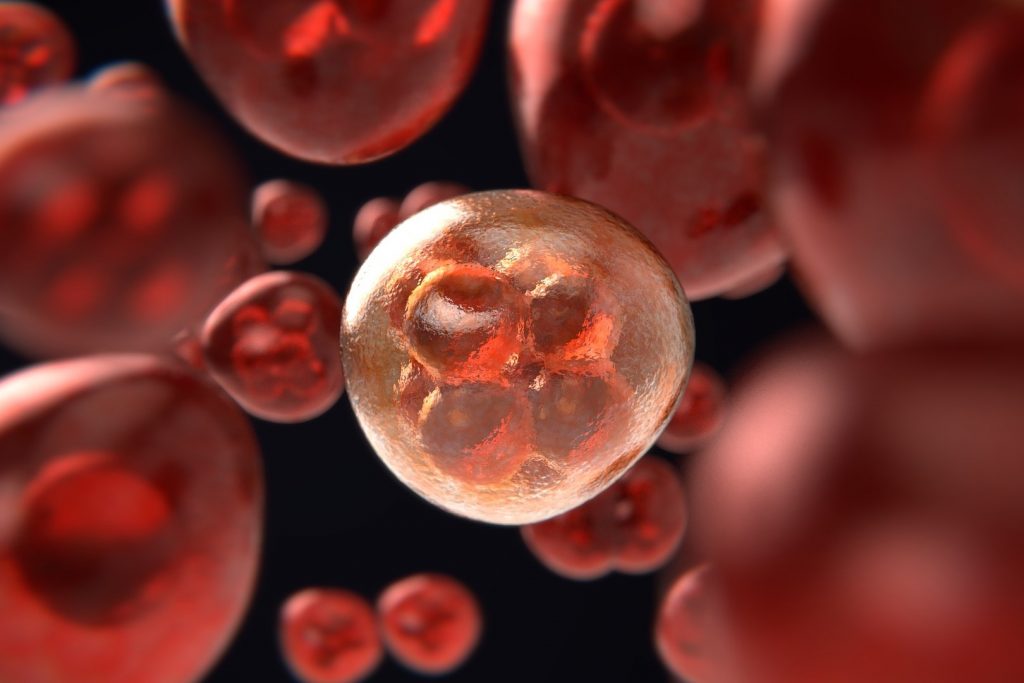Written by Mohammed Majrashi and Edited by Mehr Kaur Bawa

When people think of different types of cancers, the top three cancers that come to mind are lung, breast, and colorectal cancer. Yet, there are some lesser-known cancers that affect thousands of people every year. Acute Myeloid Leukemia (AML) is a form of cancer that affects the bone marrow, which produces blood cells, and blood itself. Normal blood marrow produces immature blood cells called hematopoietic stem cells that evolve into many different blood cells such as white blood cells that fight infection, red blood cells that carry oxygen, and platelets that help blood clot. In AML, the bone marrow makes a lot of abnormal white blood cells that eventually mature into cancerous cells instead of normal white blood cells. This disrupts the production of red blood cells, platelets, and white blood cells. AML usually affects adults, but familial AML can affect children at ages as early as four years old. Familial AML is inherited through a dominant gene, which means that receiving one defective gene from one parent is sufficient enough to acquire the disease [1].
Treatment for AML exists in the form of induction chemotherapy. As a matter of fact, induction chemotherapy is the recommended course of treatment because it is the first phase of treatment against AML in a three-phase therapeutic process to achieve complete remission, or to become cancer-free. Since AML progresses quickly, induction chemotherapy is effective at killing cancerous cells. The treatment works by giving patients doses of chemotherapy over 5-7 days [2]. While these chemotherapy drugs kill the cancerous cells, they also kill normal bone marrow cells. Since induction chemotherapy weakens immunity, there is the risk of infection [2]. To prevent this risk, patients are given antibiotics and blood cell growth factors to stimulate the bone marrow to make more infection-fighting white blood cells.
A 2019 study conducted by Hacettepe University in Turkey looked at the impact of induction chemotherapy duration on complete remission in patients with AML [3]. The study consisted of two different measures: the five-year overall survival rate (the percentage of patients who are alive five years after first receiving induction chemotherapy) and the five-year disease-free survival rate (the percentage of patients who are alive five years after first receiving induction chemotherapy without any symptoms of cancer). They found that in the five-year overall survival, 83% of patients had reduced signs and symptoms of cancer early on, while 35% of patients had reduced symptoms later on, or a delayed remission. In the five-year disease-free survival, 81% of patients had early remission, whereas 28% of patients had delayed remission after induction chemotherapy. This means that the time it takes to achieve complete remission influences the overall and disease-free survival in new patients diagnosed with AML who achieved complete remission after first induction chemotherapy. Patients achieving complete remission after a long period of time (more than 29 days) are said to have a higher relapse rate and should consider a bone marrow transplant [3].
AML renders the bone marrow incapable of producing healthy blood cells. When that happens, critical blood cell functions, such as fighting infections, cannot be carried out; the bone marrow begins producing abnormal white blood cells that develop into cancerous cells. Induction chemotherapy is the first line of treatment for AML because of how it kills rapidly progressing cancerous cells. Because some people respond to treatments better than others, the prognosis for AML often varies. If an individual receives chemotherapy and AML does not show up within five years, a person is considered cured [4]. To improve survival outcomes, early detection and treatment are key.
References:
[1] “Familial Acute Myeloid Leukemia with Mutated CEBPA.” Genetics Home Reference, U.S. National Library of Medicine, 7 Jan. 2020. www.ghr.nlm.nih.gov/condition/familial-acute-myeloid-leukemia-with-mutated-cebpa#inheritance.
[2] “Acute Myeloid Leukemia Induction.” Texas Oncology, www.texasoncology.com/types-of-cancer/leukemia/acute-myeloid-leukemia/acute-myeloid-leukemia-induction, 15 Jan. 2020.
[3] Ciftciler, R., Demiroglu, H., Haznedaroglu, I.C., Sayinalp, N., Aksu, N., Ozcebe, O., Goker, H., Aydin, M.S., Buyukasik, Y. (2019). Impact of Time Between Induction Chemotherapy and Complete Remission on Survival Outcomes in Patients With Acute Myeloid Leukemia. Elsevier, 19:729-734.
[4] “Survival Rates and Outlook for Acute Myeloid Leukemia (AML).” Healthline. www.healthline.com/health/acute-myeloid-leukemia-survival-rates-outlook#response-to-treatment.
